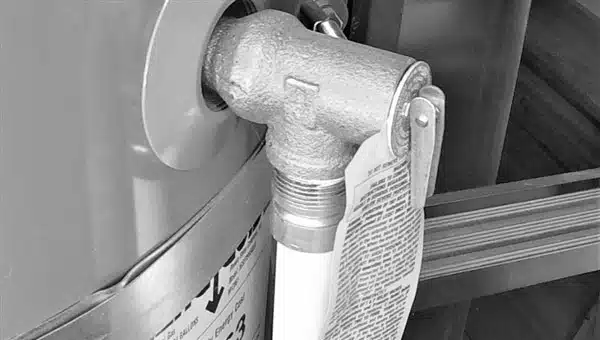The prospect of home ownership comes with a slew of new responsibilities. One of the most significant of these responsibilities is maintaining your home’s plumbing system. While this may seem daunting at first, understanding relief valves and how to repair and install them can help eliminate your plumbing worries.
Table of Contents
Understanding Relief Valves
In the world of plumbing, relief valves perform a crucial role, acting as guardians of your home’s plumbing system. Their mission is simple, yet essential: they are designed to stave off the threat of over-pressurization. This means that if your system starts to build up too much pressure, the relief valve jumps into action, releasing the excess pressure before it can wreak havoc.
As such, relief valves help to ensure that your system runs smoothly and efficiently, but more importantly, they work to forestall potentially devastating leaks or bursts. This essential function makes them an important part of any well-maintained home plumbing system.
Identifying Signs of a Faulty Relief Valve
Keeping your plumbing system running smoothly requires vigilance, and knowing the signs of a faulty relief valve is key. Indications of a malfunctioning valve can vary. One of the most common signs is water leakage or dripping from the valve. This could be an indication that the valve is not properly sealing, allowing water to escape.
In addition, pay attention to any strange sounds while the valve is operating. Unusual noises could point to internal damage or debris obstructing the valve’s function. A crucial sign to watch out for is an underperforming or over-performing relief valve. If your relief valve is constantly releasing pressure when it doesn’t need to, or conversely, failing to release pressure when it should, it’s time to investigate.
Lastly, monitor your water heater’s performance. If your water isn’t heating as it should, the relief valve may be the culprit. By keeping an eye out for these symptoms and performing regular checks, you’ll be able to catch and address any issues before they escalate.
The Right Tools for the Job
Before diving into the repair or replacement of a relief valve, you’ll want to ensure you have the correct tools at hand. This job requires a couple of key items, and having them ready to go can streamline the process. You’ll need an adjustable wrench, which will be used to remove the relief valve from your system. You’ll also need Teflon tape. This will be used to wrap the threads of the valve before you reattach it, creating a seal that prevents water from leaking out.
If your assessment of the relief valve determines a replacement is necessary, you’ll obviously need to have a new valve ready for installation. Lastly, it’s wise to have a bucket and towel nearby. These will be your first line of defense against any water that might escape while you’re working on the valve. With these tools at your disposal, you’ll be well-prepared to tackle your relief valve project.
Repairing a Faulty Relief Valve
To begin fixing your faulty relief valve, you should first turn off and cool down your water heater to ensure safety. Once it’s sufficiently cool, utilize your adjustable wrench to detach the valve from the system. After removal, inspect the valve for visible signs of damage, such as corrosion or broken components.
If you notice any, replace these parts immediately. However, if the valve appears undamaged, it may simply need a thorough cleaning. Once cleaned or repaired, you can then proceed to reassemble it. As you reattach the valve to the system, don’t forget to use your Teflon tape on the threads. This step is crucial in creating a solid, leak-proof seal.
Installing a New Relief Valve
When a relief valve is beyond repair, it’s time for a new installation. Begin this process by acquiring a new valve compatible with your system. To initiate the replacement, remove the old valve by following the instructions given earlier. With the old valve removed, prepare the new valve by wrapping its threads with Teflon tape. This action is fundamental in sealing and preventing any leaks in your system.
Once adequately prepared, proceed to screw the new valve into the dedicated spot. Ensure it’s securely attached to avoid future complications. After successful installation, cautiously reactivate your water heater, staying alert for any potential leaks. The process of installing a new valve is straightforward, but requires attentiveness to ensure a successful outcome. Keep in mind, if you encounter any unexpected issues or complications during the process, don’t hesitate to consult with a licensed plumber.
When to Seek Professional Help
Navigating the world of home plumbing, particularly when dealing with essential components like relief valves, can be a complex process. While your newfound understanding of relief valves and their repair and installation might inspire confidence, it’s crucial to know when to seek assistance from a trained professional. There are times when the issues you’re facing extend beyond basic repair or replacement.
Perhaps you’re not completely comfortable with the steps involved, or an unexpected issue arises during your repair or installation process. Maybe your relief valve seems to be acting unusually, even after you’ve followed all the right steps. In these cases, it’s not just a smart choice, but a necessary one, to call upon the expertise of a professional plumber.
Their years of experience, coupled with specialized knowledge and tools, make them well-equipped to handle complicated or stubborn issues. A professional can properly diagnose and address any problems, ensuring the continued performance of your plumbing system. Remember, it’s not just about tackling the problem at hand, but also about ensuring the overall safety and longevity of your home’s plumbing system. When in doubt, it’s better to err on the side of caution and seek professional help.
Relief Valve Maintenance Tips
Regular inspection and testing of your relief valve is essential for its optimal performance. A simple yet effective maintenance tip is to periodically move the valve handle to check if it’s operating smoothly. When you lift or turn the handle, you should ideally hear the sound of water or air being released. If there is no such sound, it’s a strong indication of a possible blockage.
Alongside, make it a routine to visually check the valve for any visible signs of damage like rust or corrosion. Such conditions could potentially lead to malfunction, and spotting them early helps prevent future issues. With these maintenance tips, you’ll be well-prepared to ensure the smooth functioning of your relief valve. Remember, a little diligence can go a long way in saving you from serious plumbing issues down the line.
Related Content: Water Heater Draining

